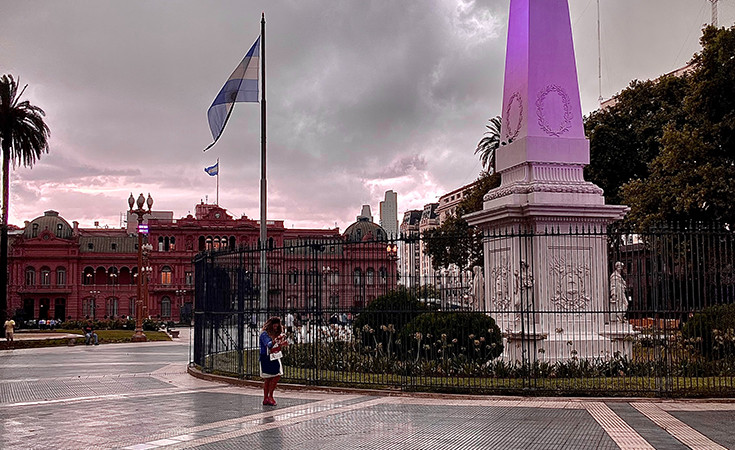
Plaza de Mayo is the main square of the city, the administrative center of Buenos Aires, as well as a historical landmark where many revolutions and overthrows took place. The square is a distinctive orientation point because the entire city grew around the spot itself. Plaza del Mayo is home to several important buildings, including the city hall, the Argentine Parliament building and the Casa Rosada, or Red House. Moreover, the square is also home to the Metropolitan Cathedral, built during colonial times, as well as the building of the Central Bank of Argentina.
The Pirámide de Mayo monument, built in 1811, is located in the center of the square. The monument was built to celebrate the first anniversary of the May Revolution of May, 1810, when Buenos Aires cut all ties with Spain and established its own, independent government.
One of the most dramatic events that changed the history of Argentina took place on the Plaza de Mayo in 1945, a day celebrated today as Loyalty Day. Thousands flocked to the square to protest for the release of Juan Domingo Perón, who was, at the time, holding an important government position, but was imprisoned by his own party, who feared that his growing popularity would become a threat for the rest of them. The government released Perón after the protest, which subsequently led to his inauguration as President of Argentina. After Perón was elected president, a tradition of people celebrating national holidays in the square with their families started. International Workers’ Day (1st May) and National Day (25th May) are particularly popular to be celebrated in this manner.
Due to the fact that Argentine history is riddled with overthrows and revolutions, the Plaza de Mayo has witnessed many infamous events in its existence. The first notable event that happened in the square happened on April 15th, 1953, when two people who were against the ruling party set explosives during a political rally. Five people were killed, and another 100 were injured in the incident. On 16th May, 1955, the Argentine Navy bombed the Plaza de Mayo in an attempt to instill fear into the government under Perón. This event is now known as “La Masacre de la Plaza de Mayo” (translation: The Massacre on Playa de Mayo). Thirty-two airplanes dropped bombs on the square. While the number of casualties is still unknown, the number of people injured in the event is estimated to be around 700.
On April 2nd, 1982, a large group of people gathered in the square to support Leopoldo Galtieri, who led the nation during the Falklands War. The Falkland Islands are still part of Argentina.
On May 29th, 2000, the Archbishop of Buenos Aires planted an olive tree in front of the Metropolitan Cathedral to commemorate the anniversary of the archbishopric, as well as to celebrate tolerance between the various religious groups who live in Argentina. In December of 2001, the Plaza de Mayo saw massive protests caused by the economic crisis in Argentina, during which several people lost their lives. In 2017, the square was closed due to renovations.
The Plaza de Mayo is the central square of Buenos Aires, and we highly recommend that you read this article about the events that made this square so notable. This will ensure your enjoyment of the square’s exquisite beauty, as well as respect of the struggles and sacrifice that the people of Argentina endured to become independent.